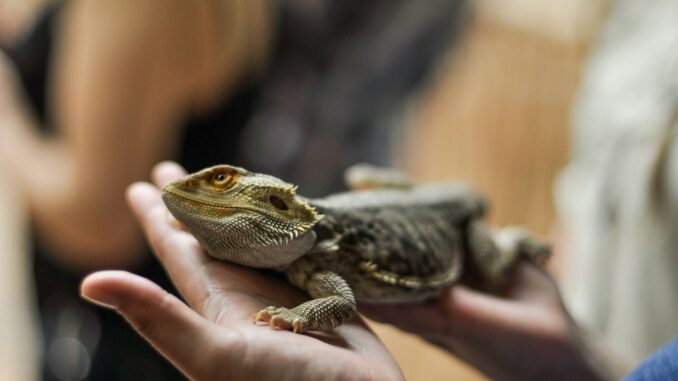
Reptiles, especially lizards, make fascinating pets with their unique behaviours and personalities. Building trust with your lizard is essential for creating a stress-free and enjoyable relationship. Safe handling practices play a crucial role in developing this trust while ensuring the well-being of your pet. In this article, we will explore the dos and don’ts of handling your lizard to promote positive interactions and strengthen the bond between you and your scaly companion.
Dos for Safe Handling your Lizard
1. Approach Calmly: Always approach your lizard calmly and slowly to avoid startling or stressing them. Sudden movements can trigger a fear response and make handling challenging.
2. Support Their Body: When picking up your lizard, always support their body properly to prevent injuries. Use both hands to lift them gently and securely.
3. Handle Regularly: Regular handling helps your lizard get accustomed to human interaction and builds trust over time. Start with short sessions and gradually increase the duration.
4. Observe Body Language: Pay attention to your lizard’s body language during handling. Signs of stress or discomfort include hissing, puffing up, tail thrashing, and color changes.
5. Create a Safe Environment: Ensure the handling area is escape-proof and free of potential hazards. A secure space will make both you and your lizard feel more at ease during interactions.
Don’ts to Avoid Stress
1. Don’t Approach Aggressively: Avoid sudden movements, loud noises, or looming over your lizard, as these actions can trigger a stress response and lead to defensive behaviors.
2. Don’t Handle During Shedding: Refrain from handling your lizard during shedding periods, as their skin is sensitive, and handling can cause discomfort or injury.
3. Don’t Force Interaction: If your lizard shows signs of stress or reluctance during handling, respect their boundaries and give them space. Forcing interaction can erode trust and lead to negative experiences.
4. Don’t Overhandle: While regular handling is beneficial, overhandling can cause stress and anxiety in your lizard. Allow them time to rest and recharge in their enclosure.
5. Don’t Grip Tightly: Avoid gripping your lizard too tightly during handling, as this can cause discomfort and potentially harm their delicate bodies. Gentle, supportive handling is key.
Building Trust Over Time
Handling your lizard with care and respect is essential for fostering trust and positive interactions. By following the dos and don’ts outlined in this article, you can create a safe and stress-free environment for your pet to thrive. Remember to be patient, observant, and responsive to your lizard’s cues to build a strong bond based on trust and mutual understanding. With time and consistent handling, you and your scaly companion can enjoy a harmonious relationship built on respect and companionship.
Safe Handling your Lizard Practices
Safe handling practices are crucial for establishing trust and building a positive relationship with your lizard. By following the dos and don’ts outlined in this article, you can ensure stress-free interactions and strengthen the bond between you and your scaly companion. Remember that patience, gentleness, and attentiveness are key when handling your lizard, and always prioritise their well-being and comfort. With care and respect, you can create a harmonious environment where your lizard feels safe, secure, and valued as a cherished pet.
Leave a Reply
You must be logged in to post a comment.